A new exhibition of mid-twentieth century consumer design objects at London’s GRAD dispels old clichés of Soviet austerity, says Elliot Watson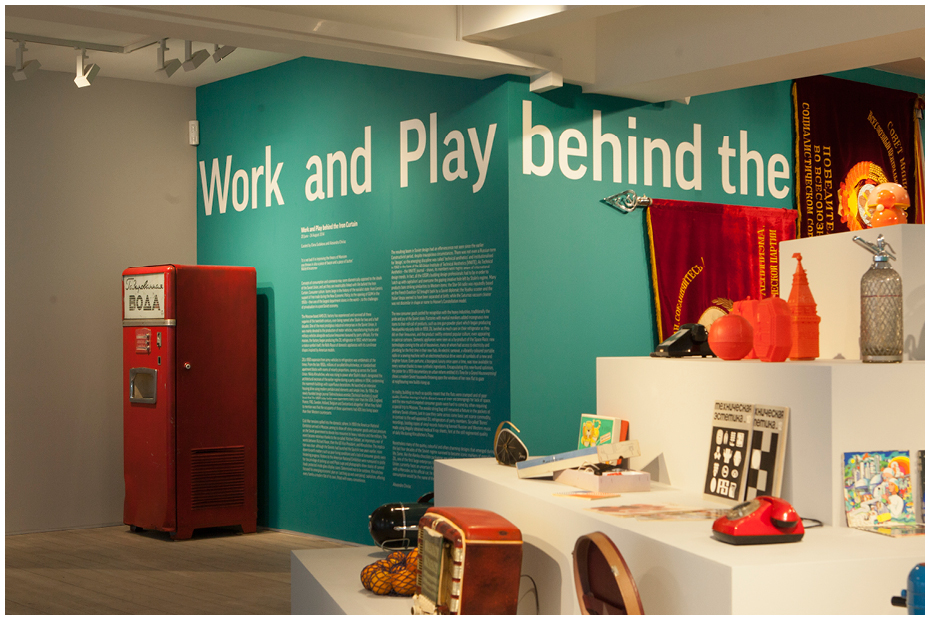
With an initial glance at the quotidian objects currently on display at Central London’s GRAD: Gallery for Russian Arts and Design, I felt unsettled. I had anticipated a collection of austere, prosaic household objects, each of them eschewing the decorative in favour of the efficient – items that embodied the great bleak, grey and opaque images of life conjured by a phrase so cold, menacing and apocalyptic as ‘behind the Iron Curtain’. Instead I found objects that were playful, colourful and useful and that often mimicked the 60s aesthetics of America and Western Europe. Guided by Co-curator Alexandra Chiriac I hoped to understand these objects in context.That context of course is a mid-twentieth century Soviet home or, more accurately, a Soviet Khrushchevka – the miniscule and standardised apartments erected in blocks by Nikita Khrushev’s government during the late 1950s and early 60s to ameliorate countrywide housing shortages. As I imagined these objects in use – the boys’ electronics set sowing the ambition of becoming a great Soviet engineer, the string bags carrying home the excitement of exotic and rare oranges and the hulking refrigerator buzzing, yet empty in the tiny kitchen – I quickly began to decipher the inherent political rhetoric in these goods, something that I had expected but then failed to notice upon that initial glance.
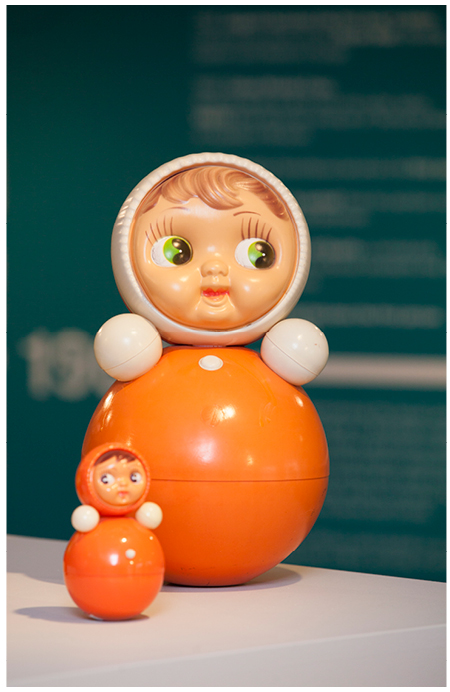
“Through a tiny gap in the Iron Curtain the Soviet people caught a glimpse of productivity, prosperity and personal material wealth”
The vacuum cleaner was a household rocket; streamlined, curved and complete with entirely superfluous fins – commissioned perhaps to placate those Russians who, when Sputnik was launched, when Yuri Gagarin took his great journey or when Valentina Tereshkova made history and after the wave of national pride subsided, wondered when they were going to benefit from Russia’s narrow and temporary lead in the space race, a feeling exacerbated by then US Secretary of State Richard Nixon’s famous ‘Kitchen Debate’ with Khrushchev.
1959 saw the American National Exhibition arrive in Moscow to show Soviets a view of another lifestyle and this, coupled with Nikita Khrushchev’s anti-Stalinist policies leaving the door just slightly ajar for creative expression, saw the birth of consumerism in the Soviet Union. Through a tiny gap in the Iron Curtain the Soviet people caught a glimpse of productivity, prosperity and personal material wealth. After all, they were only following Khrushchev’s lead: “If you can improve Marxism by adding a piece of bacon and a piece of butter, then why not?” Almost out of nowhere, the demand for consumer goods soared.
An imitation Vespa on display – the ‘Vyatka’ – hints at that newfound awareness of Western fashions and perhaps indicates a pining for the forbidden glamour of Southern Europe (it did not catch on though, partly because it was slow, but more likely because no one fancied riding it in Moscow, mid-winter.
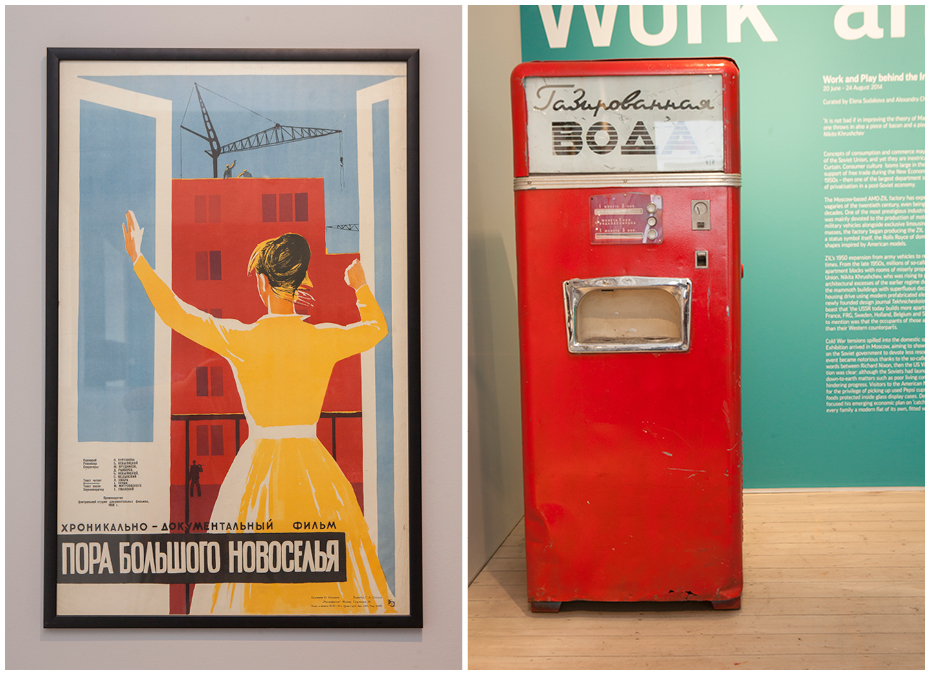
Beauty products were no longer attached to a social stigma and women rushed to buy soaps, perfumes and make-ups that were suddenly affordable with the invention of synthetic ingredients. The dowdy image of a Russian housewife was being gratefully dispatched.
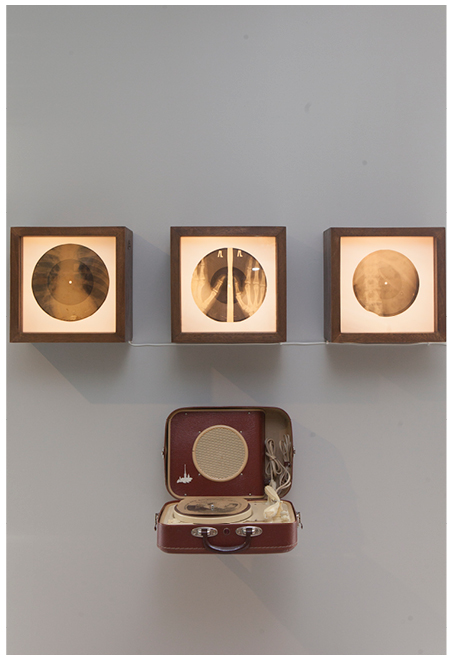
Below:‘Moscow’ Perfume
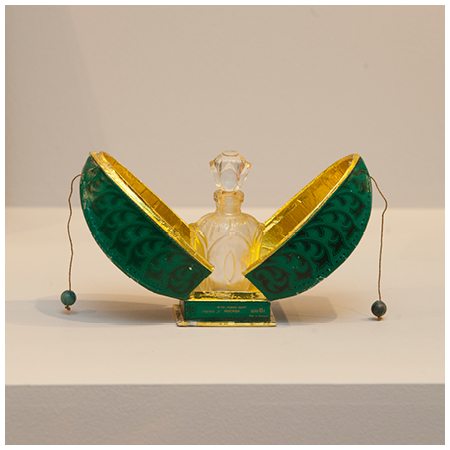
Other items are hybrids of past and present. An elegant samovar used for brewing tea is engraved in an art deco design but also tethered to the wall by its electricity cable. Traditional Nevalyashka ‘roly-poly’ dolls were suddenly rendered in garish, glossy plastics and manufactured in a gunpowder factory.
Alongside the household objects, the exhibition documents the story of the ZIL factory, a former powerhouse of Soviet industry whose vicissitudes of fortune mirrored the powerful rise and dramatic fall of the Soviet Union itself. Founded by a wealthy merchant family in 1911, then nationalised after the revolution, ZIL became one of the most prestigious industrial enterprises in the country manufacturing the luxury limousines favoured by party officials.
In response to Nixon, and to the American National Exhibition, Khrushchev wanted to compete with the West, to ‘catch up and overtake capitalism’ and thus consumer goods were required in every home. ZIL began manufacturing the refrigerators that would become the ultimate status symbol and be dubbed ‘the Rolls-Royce of household appliances’. Indeed the model on display at GRAD features a handle identical to those used on the ZIL limousines.
“You’ve got to remember that people also maligned these objects because they were new, they represented change. Russian grandmothers didn’t want to see machines doing all the work”
By the mid-sixties, though, production at the factory had reached it’s zenith. Over the following decade, further relaxation of international trade laws brought increased competition on all fronts and ZIL was due to collapse in a similar fashion to the Western auto manufacturers it had sought to emulate – a demise rubber-stamped when Boris Yeltsin exchanged his ZIL for a more fashionable, imported Mercedes. The photographs of the now deserted factory show a place where the echoes of once vigorous production are all that remain.As my tour of the exhibition was drawing to a close Alexandra once again brought my attention to the Chaika vacuum cleaner; “You’ve got to remember that people also maligned these objects because they were new, they represented change. Russian grandmothers didn’t want to see machines doing all the work. That happens everywhere,” It was a stark reminder that this is not an exhibition of Soviet politics, it’s an exploration of everyday life.
Therein lies its poignancy; despite these objects being laced with Soviet jingoism and the mutterings that their very existence represented an infiltration into Russia of poisonous western culture, the overwhelming message is that these were part of peoples’ homes – the places where children played and couples listened to music, where the daring stole the occasional laugh at the expense of their totalitarian leaders, where housewives fixed their make-up and spritzed imitation French perfume, where people feared for the future, longed for the past and lived and learned in the present.
All too often the blurred lens of history focusses on the tyrants and despots, the legends and leaders; to its great credit Work and Play Behind the Iron Curtain is a thoughtful celebration of the everyman.




